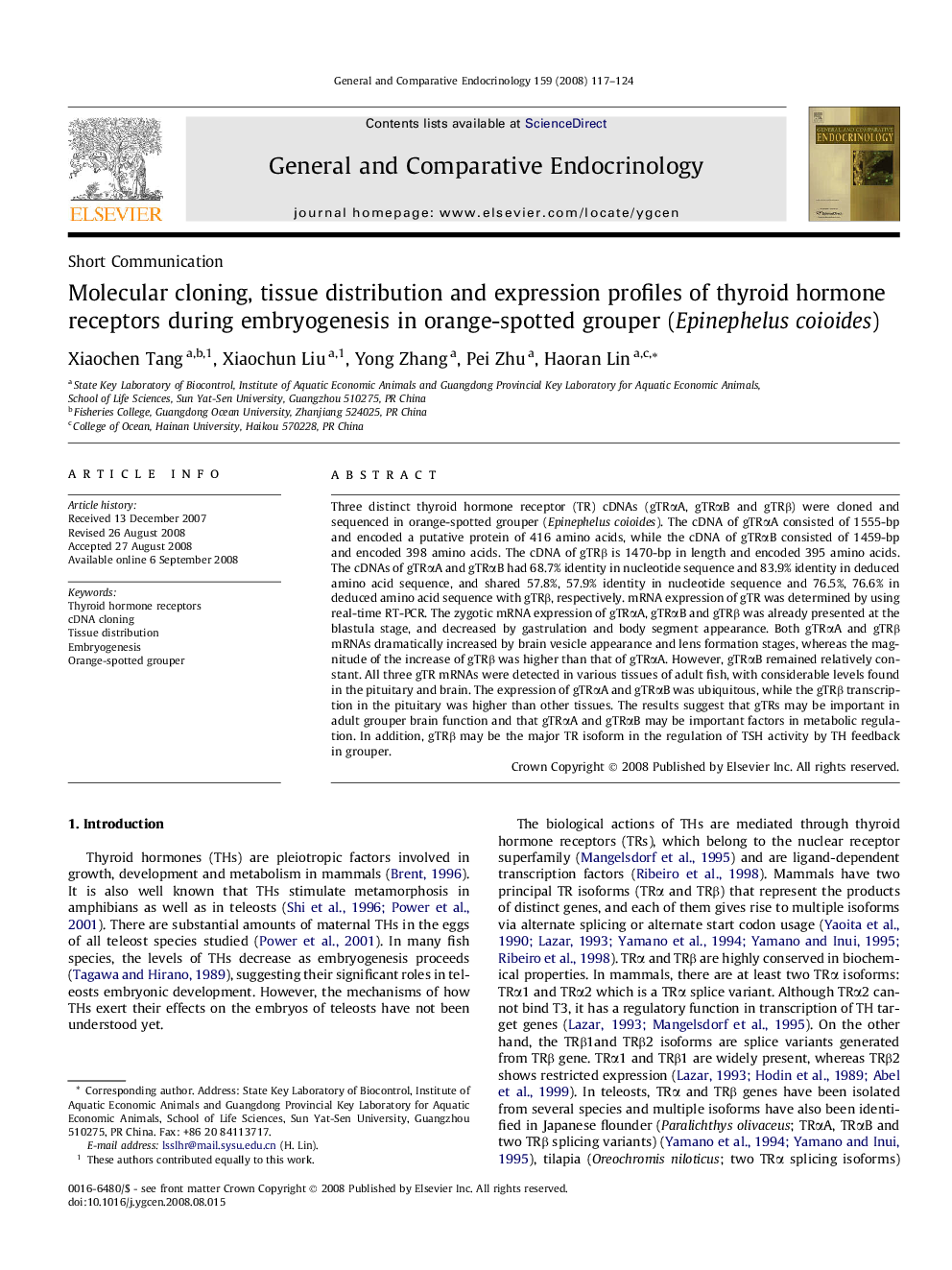| Article ID | Journal | Published Year | Pages | File Type |
|---|---|---|---|---|
| 2801835 | General and Comparative Endocrinology | 2008 | 8 Pages |
Abstract
Three distinct thyroid hormone receptor (TR) cDNAs (gTRαA, gTRαB and gTRβ) were cloned and sequenced in orange-spotted grouper (Epinephelus coioides). The cDNA of gTRαA consisted of 1555-bp and encoded a putative protein of 416 amino acids, while the cDNA of gTRαB consisted of 1459-bp and encoded 398 amino acids. The cDNA of gTRβ is 1470-bp in length and encoded 395 amino acids. The cDNAs of gTRαA and gTRαB had 68.7% identity in nucleotide sequence and 83.9% identity in deduced amino acid sequence, and shared 57.8%, 57.9% identity in nucleotide sequence and 76.5%, 76.6% in deduced amino acid sequence with gTRβ, respectively. mRNA expression of gTR was determined by using real-time RT-PCR. The zygotic mRNA expression of gTRαA, gTRαB and gTRβ was already presented at the blastula stage, and decreased by gastrulation and body segment appearance. Both gTRαA and gTRβ mRNAs dramatically increased by brain vesicle appearance and lens formation stages, whereas the magnitude of the increase of gTRβ was higher than that of gTRαA. However, gTRαB remained relatively constant. All three gTR mRNAs were detected in various tissues of adult fish, with considerable levels found in the pituitary and brain. The expression of gTRαA and gTRαB was ubiquitous, while the gTRβ transcription in the pituitary was higher than other tissues. The results suggest that gTRs may be important in adult grouper brain function and that gTRαA and gTRαB may be important factors in metabolic regulation. In addition, gTRβ may be the major TR isoform in the regulation of TSH activity by TH feedback in grouper.
Keywords
Related Topics
Life Sciences
Biochemistry, Genetics and Molecular Biology
Endocrinology
Authors
Xiaochen Tang, Xiaochun Liu, Yong Zhang, Pei Zhu, Haoran Lin,
